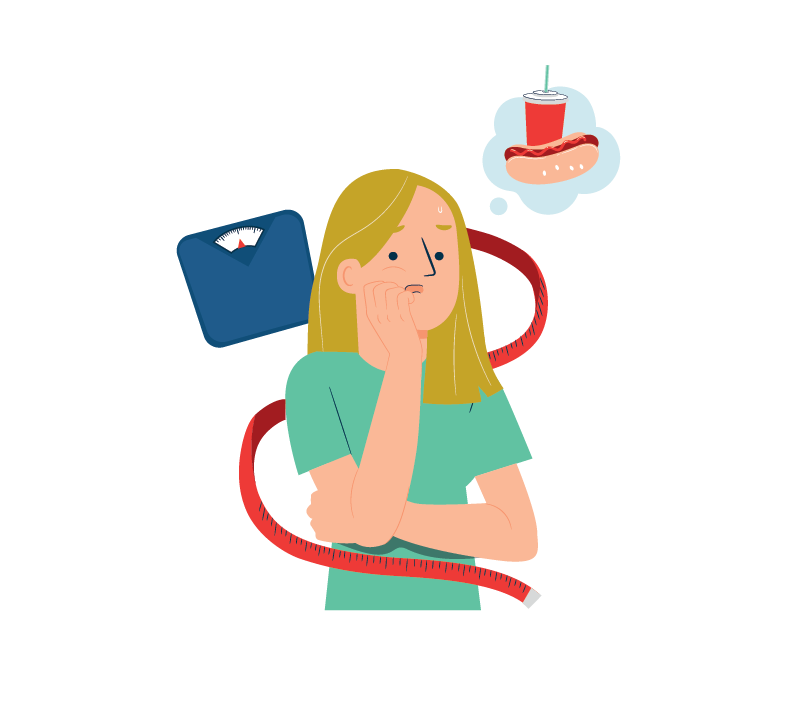|
Findings Results from the sixth COVID-19 Health Survey in April 2021 indicated that 11% of the adult population shows signs of an eating disorder (up from 8% in 2013 and 7% in 2018)[1]. These signs are most common in the 18 to 29 age group and more common among women (13%) than men (9%).
|
Evolution of the percentage of individuals aged 18 and older showing signs of an eating disorder
|
Evolution in number of hospital stays in psychiatric and general hospitals due to eating disorders
|
More than 40,000 hospital stays related to an eating disorder are recorded annually in general and psychiatric hospitals[2]. Eating disorders are associated with a heavy disease burden, have a strong impact on all life domains, and are associated with suicide risk. One third of deaths among persons with eating disorders are due to suicide. At the same time, we can see that the care offered to young people with an eating disorder varies greatly from place to place and that care programmes that have been started are sometimes interrupted because specific follow-up care is not or hardly available near the living and learning environment of young people. |
New policy initiatives
 |
The Interministerial Conference on Public Health (IMC) agreed on December 14 2022, to develop a transversal care model of eating disorders as an example of integrated care. This model is based on the specific proposals of the Committee on the New Mental Health Policy for Children and Youth (COMMHCY). It clearly states that there is a need in Belgium for a population-orientated care organisation.
|
Such care organisation leads to more health gains, greater well-being, less suffering and lower social costs.
To achieve this objective, a care pathway will be developed for children and adolescents with eating disorders. As a complement to the initiatives within the states, this involves:
- Training of primary care providers around eating disorders so that they learn to recognise signs of an eating disorder, dare to intervene or to enable them to refer.
- Further development of specialised psychological and dietetic care for adolescents with eating disorders, preferably as part of a multidisciplinary collaboration with general practitioners, psychologists and psychiatrists. Cooperation and consultation will be actively encouraged in this regard.
- Support for outpatient care with expertise through multidisciplinary outpatient support teams, known as MAST teams. Their job will be to support outpatient providers so that young people can be supervised and treated in their own environment for as long as possible. If needed, they can provide specific training and peer supervision to assistance providers. In difficult pathways, they will be responsible for care coordination and may also take steps to address gaps in care provision in terms of policy, as well as helping to look for solutions within the framework of the mental health networks.
- Increasing the flexibility of intensive offerings and having more options and variations of assistance forms developed to provide better tailored care. This mainly involves various forms of part-time treatment and (intensive) multi-family therapy (MFT and iMFT)
The new care pathways for children and adolescents with eating disorders will be implemented from 2024.
[1]Sixth COVID-19 Health Survey. First results (2021). Brussels: Sciensano. Filing number/2021/14,440/29. Accessed 1 October 2023, from https://doi.org/10.25608/r4f5-1365
[2]IIn 2020, we saw a decrease because of COVID-19 pandemic measures and because of the temporary suspension of registration of diagnoses in Minimal Psychiatric Data (MPD).